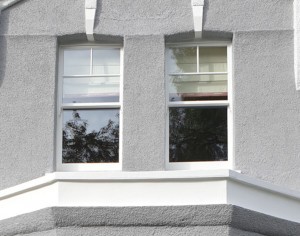When thinking about what you want to know when reading a sash window guide, key elements covered should include what they are, how to prevent common issues and ways to maintain a traditional look without sacrificing function. But understanding how sash windows work is a great way to make sure you’re operating them properly while spotting issues early if anything goes wrong.
Here are some easy ways to understand how sash windows operate.
 Sash Window Weights
Sash Window Weights
Sliding sash windows are the most popular mechanism for this type of window. One of the most common sash window features to help with the sliding operation is weights to create a balanced load.
There are lots of different kinds of sash windows weights available, and how they differ will depend on the manufacturer chosen. This includes traditional leaded weights which aim to counterbalance the weight of the moving sash. Some manufacturers prefer pre-tensioned spiral balances as a modern alternative. Whichever operation is controlling the weight of the sashes, it allows property owners to easily pull sashes up and down as required, while holding them in place at the mid-rail. It also stops the bottom sash from falling too quickly when you shut it, producing a smooth glide operation controlled by the user.
Many sash windows will have a cord attached to help you operate them. The weights will be fully concealed within a hollow box frame to ensure they don’t impact on the appearance of the sashes. However, if you’re having issues with the windows staying in place once open, there could be a problem with the weights.
Watertight Seals
Like any glazing that opens and shuts, it’s imperative for no rainwater to be able to get inside your home while the window is closed. As sash windows have sliding mechanisms, the way they work may be similar to that of a sliding patio door rather than a traditional casement window.
The sashes must sit tightly inside the box frame to ensure the unit remains watertight without affecting the smooth glide of the opening mechanism. This often involves the use of a vertical seal (bead) which creates the perfect size channel for each sash to move up and down in. If there are issues such as leaks around the sash windows, problems with the seal should be examined.
Inward Tilting Options
Most property owners opt for traditional vertical sliding sash windows, but there’s sometimes the option to add an inward tilting mechanism if you’re getting new ones fitted. This usually means that while the sashes can slide up and down, you can also unlock them to tilt them inside, giving you access to clean the external side of the glazing. Speak to your supplier if you’re interested in this type of opening when replacing sash windows.
Sash Window Services offer a wide range of solutions, including window replacements and installations across the local area. We operate across London locations such as Chiswick and Clapham. Contact us now for more advice.






